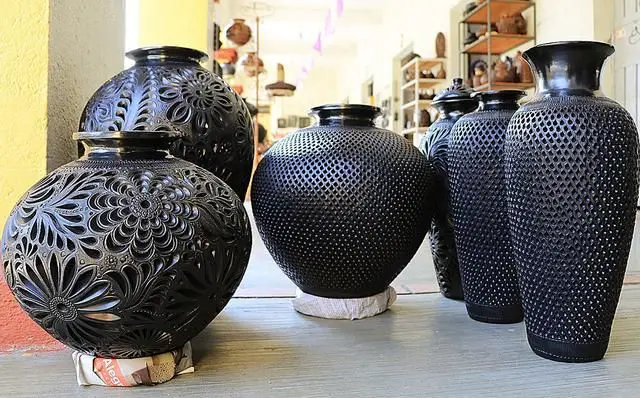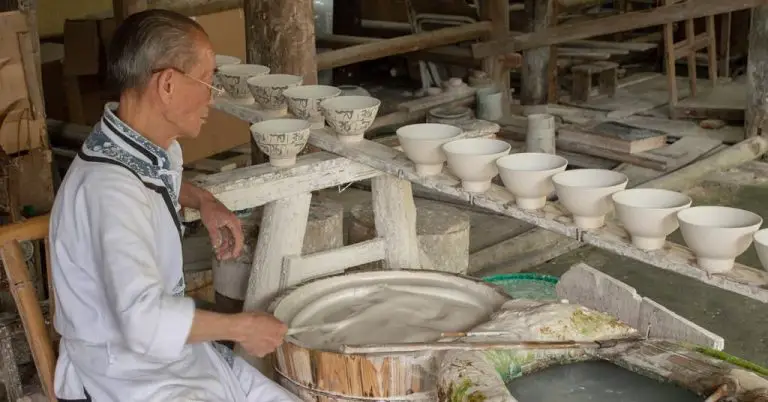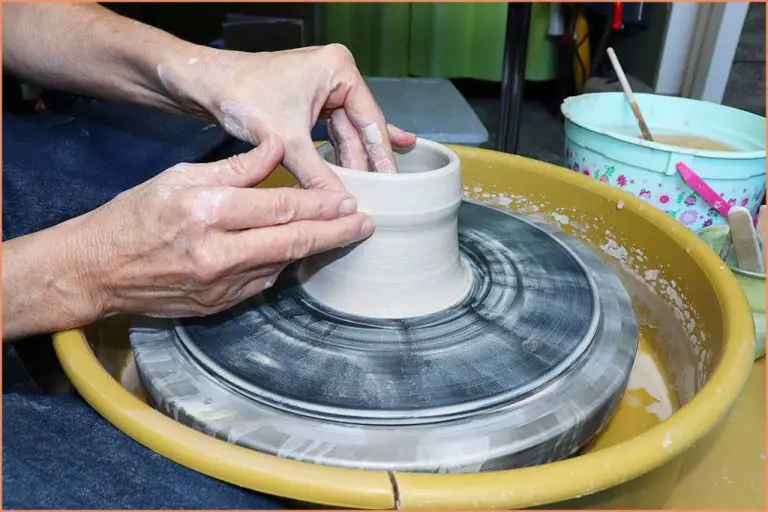What Mexican Town Is Famous For Pottery?
Introducing the Pottery Town of Mexico
The town of San Bartolo Coyotepec in the state of Oaxaca, Mexico is famous for its black pottery known as barro negro. Located just outside the capital city of Oaxaca, San Bartolo Coyotepec has a centuries-long tradition of pottery making dating back over 500 years to the pre-Hispanic period. The town is set amidst rich clay deposits, which potters have utilized for generations to craft utilitarian and decorative pieces from candle holders to animal figurines. The black pottery of San Bartolo Coyotepec is created using a specialized technique that involves burnishing and repeatedly firing the clay to produce its signature black color and shiny surface. Today, San Bartolo Coyotepec remains a hub for Oaxacan black pottery, with many families carrying on the pottery traditions and numerous workshops producing the iconic style that has made the town famous.
History and Origins
The history of pottery in Tokoname dates back over 1000 years. Tokoname first became known for its pottery during the Kamakura period (1185-1333 CE) according to https://shihateacomfort.com/shiha-tokoname/. The natural resources in the area, such as clay and wood, allowed pottery production to thrive. Over time, Tokoname became one of the main pottery production centers in Japan.
In the beginning, Tokoname produced mostly utilitarian pottery and tiles. The pottery was made from the alluvial clay found along the rivers near Tokoname. The fine particles and iron content of this clay resulted in very durable, high-fire ceramics http://www.addisonembroideryatthevicarage.co.uk/2014/01/16/vietnamese-ceramics/. As Tokoname’s reputation for quality pottery grew, potters began experimenting with new styles and techniques.

One major influence came from Korean potters who brought over porcelain techniques in the late 16th century. This allowed Tokoname potters to expand into porcelain production. Teapot making also became an important craft in Tokoname starting in the Edo period (1603-1868). Tokoname teapots were renowned across Japan for their heat retention abilities.
Notable Pottery Techniques
The town of Tokoname is known for several distinct pottery techniques that have been developed and refined over centuries of ceramic arts mastery. Some of the most notable techniques include:
Tokoname-yaki: This term refers to the style of stoneware pottery made in Tokoname. It involves kneading and refining the clay repeatedly to achieve an extremely dense texture. Tokoname-yaki pieces are prized for their durability and ability to retain heat effectively (https://shihateacomfort.com/shiha-tokoname/).
Nerikomi: This is a style of layering and blending different colored clays together to create patterned effects in the finished pottery. Tokoname artisans use special tools to imprint designs into the layered clays (https://community.ceramicartsdaily.org/topic/6628-put-name-of-event-that-i-am-selling-products-at-on-my-products-sold-there/).
Shino Glazing: A signature off-white glaze developed in Tokoname that achieves its distinctive milky color through the use of special feldspar ingredients in the glaze recipe. It creates an extremely smooth glazed surface.
These time-honored techniques highlight the technical mastery of Tokoname’s potters and help produce the unique utilitarian and decorative ware the town is famed for.
Famous Potters
Tokoname has been home to many skilled potters who have helped shape the town’s reputation for excellent ceramics. According to the website ShihaTeaComfort.com, “Tokoname is one of the oldest pottery towns in Japan” [1]. Some of the most renowned potters who have lived and worked in Tokoname include:
Tatsuzo Shimaoka was a 20th century potter who helped popularize Tokoname ware. He studied pottery in Tokoname before going on to create avant-garde works that combined traditional and modern aesthetics. Shimaoka was designated a “living national treasure” by the Japanese government in 1996 [1].
Kenzan I was a 17th century potter who established his kiln in Tokoname and specialized in overglazed enamel decoration. His pieces often featured natural motifs like flowers and birds. Kenzan I mentored his younger brother Kenzan II, who also became a renowned Tokoname potter [1].
Sakaida Kakiemon studied pottery techniques in Arita but eventually moved to Tokoname. He specialized in Kakiemon-style white porcelain decorated with colorful enamel designs. Kakiemon XI and Kakiemon XIII later continued the family’s pottery legacy in Tokoname [1].
Economic Importance
The pottery industry is a major economic driver for the town of Libmanan in the Philippines. Pottery production and trade have been central to Libmanan’s economy for centuries. According to the Wikipedia page on Libmanan, “Portions are also adopted to pottery-the making of which has been a local industry from early periods up to the present.”
Many local families are engaged in pottery production, with skills and techniques passed down across generations. Pottery provides an important source of income and livelihood for Libmanan residents. Sales of pottery to local, national and international markets also brings money into the local economy.
The prominence of Libmanan’s pottery has helped make it an attractive tourist destination. Visitors come to see pottery being made, learn about techniques, and purchase items directly from studios and shops. This pottery tourism contributes to the service industry and hospitality sectors of the town.
Government and industry groups recognize pottery’s economic significance and work to support its continued growth. Initiatives like the Filipino Pottery School provide training and resources to nurture the next generation of potters. Investments like these ensure Libmanan’s pottery legacy and economic health are sustained for the future.
Cultural Significance
Tokoname, located in Aichi Prefecture, Japan, has been a center of pottery production for over 1,000 years. The town is famous for Tokoname-yaki pottery, which encompasses various regional styles of ceramic ware including Kyusu teapots. Tokoname’s cultural identity is deeply intertwined with pottery; according to the town’s website, “Pottery is a valuable asset handed down to the people of Tokoname from their ancestors.”
Pottery production began in Tokoname over 1,000 years ago during the Heian period. The natural resources available, including high quality clay and forests for firewood to fuel kilns, made Tokoname an ideal location for pottery. Generations of potters have refined and innovated techniques for creating both functional and artistic ceramics (Shiha). Tokoname is home to over 300 pottery studios, and most residents have some connection to the ceramics industry.
Beyond economic impact, pottery holds cultural and even spiritual significance in Tokoname. According to tradition, a kiln is thought to contain the fire god Kojin, so kilns are treated with reverence. The annual Tokoname Pottery Festival celebrates the town’s ceramics legacy with exhibitions, demonstrations, and a parade through the streets featuring large ceramic floats. Overall, the enduring practice of pottery has created a sense of identity, community, and pride for the people of Tokoname.
Tourism
The town of Tokamachi is a popular tourist destination for those interested in Japanese pottery and culture. Located in Niigata Prefecture, Tokamachi earned the nickname “Town of Kimono” for its long history of producing Japanese kimonos using locally-made textiles and dyes. Today, Tokamachi celebrates this unique culture at the annual Tokamachi Kimono Festival where hundreds of locals don traditional kimonos and parade through the streets.
In addition to the kimono festival, Tokamachi also hosts several large pottery markets and festivals each year. The Tokamachi Pottery Festival takes place every May and features demonstrations by local artisans as well as opportunities for visitors to try making pottery themselves. There are also numerous pottery studios and workshops scattered throughout the town that welcome tourists interested in learning about Tokamachi-style pottery.
Some of the most popular pottery shops and attractions include the Aoyama Porcelain Lab, which offers factory tours and the chance to paint your own porcelain. The Gosu Blue Pottery Kiln is another workshop where visitors can see traditional pottery firing techniques firsthand. With its long pottery heritage and many unique cultural events, Tokamachi provides an immersive experience into the world of Japanese ceramics.
Notable Local Pottery Businesses
Barceló (https://www.reddit.com/r/language/comments/110tn1s/do_you_recognize_this_languagename_signature_of_a/) is one of the most famous pottery factories in the town. Founded in 1925 by the Barceló family, it specializes in brightly painted pottery made using local clay and traditional techniques. The factory has an on-site museum showcasing rare examples of the family’s work over the decades.
Arte Nativo (https://community.ceramicartsdaily.org/topic/6628-put-name-of-event-that-i-am-selling-products-at-on-my-products-sold-there/) is a large pottery workshop founded in the 1960s. It focuses on more contemporary, asymmetrical designs and glazes. The workshop offers daily tours showcasing traditional pottery wheels and kilns still in use.
García Cerámica is a small family-run shop in the historic center of town. It sells handmade pottery produced using techniques that have been passed down for generations. Their pottery reflects local styles and designs.
Other notable pottery businesses include Galería Vasconcelos, Cerámica Flores, Alfarería Márquez, and Olvera y Sobrinos. Most focus on traditional pottery styles and techniques that the town is known for.
Pottery Festivals and Events
The most famous pottery festival in Mexico is the National Ceramics Fair held annually in the fall in the town of Patzcuaro, Michoacán. This event celebrates the rich tradition of pottery making in the region and attracts artisans from all over Mexico to sell their wares. According to the community ceramic arts website, potters mark their pieces with the name of the National Ceramics Fair to identify items sold at the event (source).
In addition to the National Ceramics Fair, Patzcuaro hosts the International Guitar Festival in the spring and the Day of the Dead festival in the fall, both of which bring many visitors to the town interested in experiencing the local culture and purchasing regional crafts like pottery.
Other towns in Mexico also hold annual pottery fairs and festivals, but none as prominent as Patzcuaro’s National Ceramics Fair. These events provide an opportunity for artisans to showcase and sell their work, and for visitors to learn about Mexico’s storied tradition of pottery making.
The Future of Pottery
The town of San Bartolo Coyotepec has a promising future in pottery, even as tastes and technology change. One key innovation has been in creating new, contemporary designs and products, while still using the traditional barro bruñido technique. The artisans have adapted by making modern home wares like vases, candle holders and decorative pieces, in addition to the traditional candelabras and large pots, to appeal to modern buyers. Some potters are also looking at new clays, tools and firing methods to achieve different looks and feels. The pottery school continues to pass on these ancient skills to new generations, ensuring this art does not die out. Tourism continues to provide an economic incentive. The government has supported pottery through programs like FONART that help artisans modernize equipment, get loans and sell wares abroad. While keeping tradition alive, the potters also look to the future. Their innovation and flexibility will be key to carrying on this iconic Mexican folk art.




